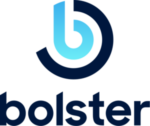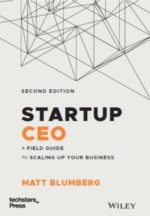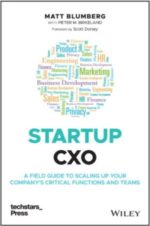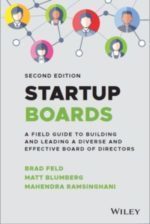(This is a bonus quick 5th post, inspired by long time StartupCEO.com reader Daniel Clough, to the series that ended last week about Scaling CPO’s- the other posts are: When to Hire your First Chief People Officer, What does Great Look like in a Chief Privacy Officer, Signs your Chief Privacy Officer isn’t Scaling, and How I Engage With The Chief People Officer.) As I’ve noted over the years, the Chief People Officer role is a tough one to get right and a tough one to scale with the organization if what you’re really looking for is a strategic business partner who can lead not just the important blocking and tackling in HR but innovates the people part of your…
Category
Startup CEO
Scaling Tip: Spend Less Time Talking. And Spend More Time Talking
One of my top 10 scaling tips for CEOs as they take a business from startup to scaleup keys in on communication patterns. As your company grows from 0-25 employees to a place where you no longer work hands-on with most of the team, which is really >25 but gets more and more true at every step beyond that, you need to rethink how you handle employee conversations in many ways. My tip sounds confusing, but let me break it down. Spend less time talking. The less you know about the day to day details of everyone’s job and experience, the more time you need to spend learning and keeping in touch with those details from others. The only way…
Onboarding Executives
I wrote a colorfully-named post years ago called Onboarding vs. Waterboarding, which detailed out some of the general principles around onboarding new employees that our companies have used over the years. A few weeks back, one of our clients and fellow CEOs of a Series C Ed:Tech company asked me for tips on onboarding senior executives, and some of what I said varied from or built on that earlier post. Here are a few of the themes we riffed on: Special thanks to my friend Amir for inspiring this post!
Should CEOs Wade Into Politics, Part II
I’m fascinated with this topic and how it’s evolving in society. In Part I, a couple years ago now, I changed my long-held point of view from “CEOs should only wade into politics when there’s a direct impact on their business” (things like taxes and specific regulations, legal immigration) — to believing that CEOs can/should wade into politics when there’s an indirect impact on business. In that post, I defined my new line/scope as being one that includes the health and functioning of our democracy, which you can tie to business interests in so many ways, not the least of which this week is the Fitch downgrade of the US credit rating over governance concerns. Other CEOs will have other…
My Favorite Interview Question
I hosted a CEO roundtable dinner the other night, and someone in the group asked me what my favorite question was to ask in interviews. I kept thinking about something I read years ago, that the late legendary Zappos founder Tony Hsieh used to ask, “do you consider yourself a lucky person,” about which he said, “Lucky people approach the world with an open and optimistic mind that enables them to see unexpected opportunity more readily.“ That’s a good thing to find in a future team member of course, but the question is a little too indirect for me. My favorite question (ok, it’s a compound question) is to ask someone “What are you great at? What do you absolutely…
Formula for Strategic Leadership
Years ago, I heard then General David Petraeus give a talk to a small group of us about leadership. He was literally coming to us live from his command center in Iraq or Afghanistan when he was running the whole theater of war over there. I realize he subsequently had some tarnish on his reputation after pleading guilty to a misdemeanor around handling classified information, but the main thrust of his talk, his Formula for Strategic Leadership, still stands as one of the more memorable talks on leadership I’ve ever heard and is no less relevant as a result. Given that I still remember it vividly 14-15 years later, I thought I’d recreate it here with my own annotations after…
Learning Loops
The last couple weeks, I’ve written about tools in the CEO toolbelt that I learned with my coach Marc years ago in a workshop called Action/Design — Inquiry vs. Advocacy, and The Ladder of Inference. The final post in this series is about Learning Loops (or Double Loop Learning if you prefer), popularized by Chris Argyris a couple decades ago. Here’s the graphic on it: What’s the tool in the CEO toolbelt here? It’s that every time you’re analyzing a result, you need to analyze it on two levels. Level 1 is the more obvious learning — “What happened…and what do I do next time to produce the same/a different result?” Level 2 is the less obvious learning — “Why…
The Ladder of Inference
Last week, I wrote about Inquiry vs. Advocacy, an important principle I learned early in life and then explored more deeply in an Action/Design workshop my coach Marc took our whole leadership team through years ago. This week, I’ll continue to riff on the theme of communications tools in the CEO toolbelt by talking about The Ladder of Inference (detailed article here). This is a great graphic from the article: Any time you’re struggling with opinions vs. opinions or people are jumping to conclusions based on a narrow set of evidence, this framework is your friend. The best way to start any tricky conversation with those characteristics is to start “at the bottom of the ladder,” meaning you start by…
Inquiry vs. Advocacy
My Grandpa Bill used to not want to talk about himself at dinner parties. When one of us asked him why one day, he said, “I already know what I have to say. What I don’t know, is what the other person has to say.” There are a few principles I learned years ago in a workshop that my coach Marc led for us called Action/Design. I’m going to try writing a few posts about them, and you can find some articles on them here. Inquiry vs. Advocacy is simple. Understand the balance of when you ask and listen vs. when you speak in a given conversation. Both are important tools in the CEO tool belt. My rule of thumb…
Bring People Along for The Ride, Part II of II
Last week, I wrote about Bringing People Along for The Ride by involving people in the process of ideating and creating change in your organization. That’s the most important thing you can do to make it easy for people to handle change. But what about the people you don’t or can’t bring along for the ride in that way? If you organization has more than 10 people in it, there will inevitably be people where you’re IMPOSING CHANGE ON THEM. And honestly, even people who are involved in designing change still have to live through its impact. Today’s post is about managing the actual impact. The best thing you can do as a leader in helping your organization navigate change…
Bring People Along for The Ride, Part I of II
One of the CEOs I mentor asked me the other day asked me this question: I need to start making my organization think differently – more like a startup that needs to scale and less like a project. People need to start doing more specific jobs and not swarm all over everything. How do I get people to “get” this without freaking out? Every CEO faces dilemmas like this all the time. One of my management mantras over the years has been, “You have to bring people along for the ride.” Fundamentally, that means two things. I’ll write about one of them here today and save the other for next week. First, bringing people along for the ride means you…



